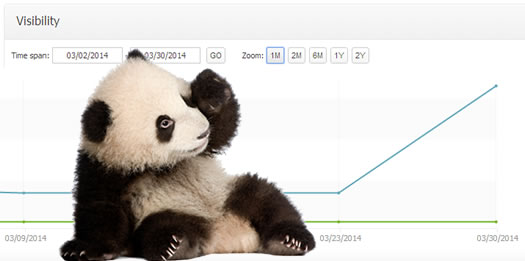
As a consultant helping a number of companies with Panda recovery, I’ve been eagerly awaiting the March Panda update. Based on the data I have access to, I was able to pick up and analyze Panda UJan14, UFeb14, and the infamous UFeb14Rev (where Google re-rolled out the algorithm update after mistakenly hammering movie blogs). Needless to say, it’s been an interesting beginning to the year Panda-wise. And if you’re wondering what U{Month}{Date} is, that’s the naming convention I’m using for unconfirmed Panda updates.
And in case you forgot, Google announced in July of 2013 that they wouldn’t be confirming Panda updates anymore. As I explained in a post soon after that, unconfirmed Panda updates can cause mass chaos and can drive webmasters dealing with mysterious traffic losses insane. But, I also explained that if you have access to a lot of Panda data, you can sometimes pick up the updates. And that’s where SEOs helping a lot of companies with Panda can come in very handy. Those SEOs have turned into human Panda barometers and can help identify when the specific updates roll out. Remember, we know that Panda is supposed to roll out monthly, and can take about ten days to roll out. It’s not real-time, but Google trusts the algorithm enough to unleash it once per month.
I have been able to identify a number of updates since July of 2013, including UJan14 from January 11th and the flawed UFeb14 from February 11th (which was the movie blog fiasco I mentioned earlier). But it’s been relatively quiet since then from a Panda standpoint. I’ve only seen some moderate movement around 3/11/14, but nothing that I could nail down as Panda. But then the 24th arrived, and it quickly became clear that something widespread was taking place. Just like a Panda update.
Upward Movement Across Panda Victims
During the week of March 24th, I was checking organic search trending across clients and quickly noticed a number of increases from Google Organic. The first one that caught my attention was a website that had been battling Panda for a long time. It’s an ecommerce site that has seen many ups and downs since February of 2011 when Panda first arrived (and more downs than ups if you know what I mean). The 25th showed an 18% increase in traffic, and it has consistently remained higher since then. Google Webmaster Tools now shows increases in impressions and clicks starting on the 24th. Comparing the entire week to previous weeks reveals Google Organic traffic was up 15%.
An example of a bump in Google Organic traffic starting on 3/24/14:

And that site wasn’t alone. I was seeing similar lifts in Google Organic traffic across a number of Panda victims I have been helping. That lift ranges from 9% to 24%, with a few outliers that saw much larger increases (45%+). Note, those sites seeing larger increases didn’t have massive amounts of traffic, so it was easier to show a much larger lift. That being said, the lift was significant for them. But overall, I mostly saw moderate recoveries versus significant ones during this update. And that leads me to think we just might have seen the “softer” Panda update that was supposed to help small to medium sized businesses (SMBs).
Matt Cutts and a “Softer” Panda
At SMX West, Matt Cutts from Google explained that they were working on a “softer” version of Panda that would make it less of an issue with certain websites. Matt said the “next generation” Panda would be aimed at helping small businesses that might be affected by Panda. Well, based on what I’m seeing, it sure looks like the new Panda could have rolled out. Almost all of the companies I analyzed that were positively impacted by the 3/24 update could be categorized as SMBs. They aren’t big brands, major corporations, they don’t have a lot of brand recognition, and some are run by just a few people.
In addition, most of the recoveries fell into the 10-20% range, which were modest increases. Don’t get me wrong, that’s still a nice lift for some of the companies that previously got hit by Panda, but it’s not a massive recovery like you might see during other Panda updates. For example, a company I was helping that got hit by Phantom in May of 2013 ended up recovering in August and surged by 68% in Google Organic. That’s a big recovery. So, modest recoveries line up with a “softer” algo that could help small businesses (in my opinion).
March 24, 2014 – A Good Day for (SMB) Panda Victims
Below, I have included some screenshots of Google Organic trending for companies impacted by Panda UMarch14. You can clearly see a lift starting on the 24th and remaining throughout the week. Note, these companies span various industries, so it wasn’t tied to one specific niche.




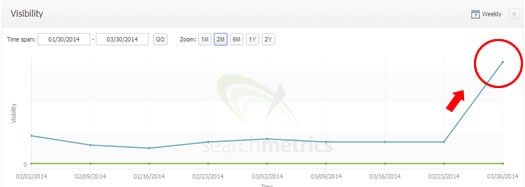
Common Characteristics and Drivers for Recovery
If you have been impacted by Panda in the past, or if you are simply interested in the algorithm update, then I’m sure you are wondering why these specific companies recovered on 3/24. And no, not all companies I’m helping with Panda recovered. Now, only Google knows the refinements they made to the Panda algorithm to soften its blow on small businesses. That said, I think it’s important to understand what Panda victims have addressed in order to better understand how the algorithm works.
Below, I’ll cover some of the common problems I’ve been helping companies tackle over the past several months Panda-wise (the companies that recovered during UMarch14). I’m not singling out certain factors as the trigger for this specific update and recovery. But I do think it’s worth covering several of the factors that were causing serious problems Panda-wise, and that were rectified over the past few months leading up to the recoveries.
Over-optimized Thin Pages
Several of the websites that experienced recovery had serious problems with thin pages that were over-optimized. For example, pages with very little content combined with over-optimized title tags, meta descriptions, body copy, etc. And the body copy was typically only a paragraph or two and was clearly written for search engines.

Doorway Pages
Along the same lines, several of the companies employed doorway pages to try and gain organic search traffic across target keywords. For example, they would reproduce pages and simply change the optimization to target additional keywords. For some of the sites I was helping, this was rampant.
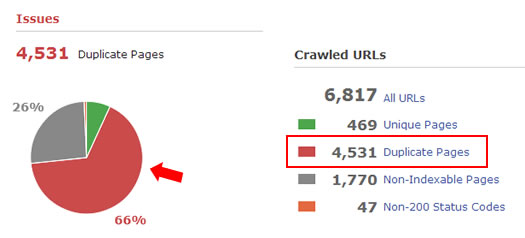
Keyword Stuffing
Some of the companies that saw recovery were keyword stuffing pages throughout their sites. For example, all core page elements excessively contained target keywords. The copy was extremely unnatural, the on-page titles (which were often the h1s), were clearly targeting keywords, the navigation was all using exact match anchor text, and the footer was crammed with more keyword-rich content and exact match anchor text links. And many times, the target keywords were repeatedly bolded throughout the content. It was obvious what the goal was while analyzing the pages… it was all for SEO.
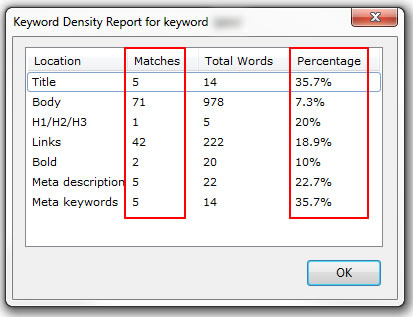
Excessive Linking Using Exact Match Anchor Text
Some of the websites that saw recovery were previously weaving exact match anchor text links into every page on the site. So, you would visit a page and immediately find exact match or rich anchor text links from the copy to other pages on the site. It was excessive, unnecessary, and made for a horrible user experience. And as I explained above, several of the sites were also employing spammy footers with exact match anchor text links (and many of them).
Affiliate Links
Several of the companies that saw recovery were including followed affiliate links in the site content. Those links should absolutely have been nofollowed. During initial audits I would uncover followed affiliate links, flag them, and document them in a spreadsheet. When sharing my findings with my clients, some of the links were so old that my clients didn’t even remember they were there! “Affiliate creep” can cause big problems post-Panda. Nofollowing all affiliate links or removing them was important for sure.
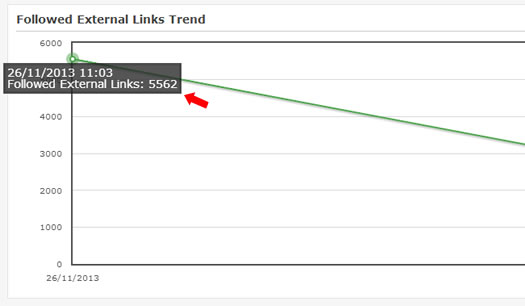
Nuking Duplicate Content or Noindexing Thin Pages
Some of the companies that saw recovery had an excessive amount of duplicate or thin content. Upon surfacing the problematic urls, my clients either removed or noindexed those pages. In some cases, that impacted tens of thousands of pages (or more). Addressing “low-quality” content is one of the most important things a company can do Panda-wise. And that’s especially the case if some of those pages were ranking well in Google (prior to the Panda hit). You can read more about the sinister surge in traffic before Panda strikes to learn more about that phenomenon.
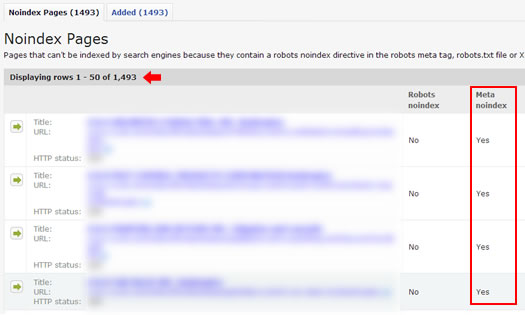
Warning: Some Sites Slipped Through The Panda Cracks
I also wanted to quickly mention something that can happen with algorithm updates. There were two sites I analyzed that showed a modest recovery that shouldn’t have recovered at all. They were rogue sites that some of my clients had set up in the past that were simply sitting out there. Those sites are not getting a lot of attention from my clients, and there has been very little work on those sites from a Panda standpoint. Needless to say, I was surprised to see those sites positively impacted by Panda UMarch14. Sure, they didn’t surge in traffic, but they definitely increased starting on the 24th. This also leads me to believe that we saw the softer Panda update that Matt Cutts mentioned.

Summary – Be In It For The Long Haul
As I explained earlier, Matt Cutts promised a “softer Panda” at SMX West that could help small businesses. Based on what I have seen, that new update might have rolled out on 3/24. I saw a number of companies that were dealing with Panda problems recover to some extent starting on that date.
If you have been hit by Panda, then the recoveries I documented above should signal hope. The companies that saw recovery have worked hard to rectify a range of “content quality” problems. Audits were completed, problems were identified, and a lot of work was completed over the past few months.
The good news is that a number of the websites making significant changes saw a positive impact from Panda UMarch14. I think it underscores a Panda philosophy I have been preaching for a long time. You must be in it for the long haul. Short-term thinking will not result in recovery. You need to have the proper analysis completed, identify all content-related problems, and work hard to rectify them as quickly as you can. And Google crafting an algorithm update that softens the blow of Panda sure helps. So thank you Matt Cutts. From what I can see, there are companies seeing more traffic from Google today than they did a week ago. And that’s never a bad thing.
GG

Hey Glenn,
Which software were you using in those screengrabs under “Doorway Pages” and “Keyword Stuffing?”
Thanks!
Hi Kyle. DeepCrawl for the doorway pages/duplicate pages screenshot and SearchStatus plugin for keyword density. Hope that helps!
Thanks, I’ve never heard of either. Both looks great! Any strong feelings about DeepCrawl’s dup content algo vs. Screaming Frog’s?
My wesite visites are icreased from round about 1400 to 2400 on 3/24.
Hey, great to hear the latest update positively impacted your site. Has the increase remained for you since 3/24? And are you a small to medium sized business? Thanks.
I’ve lost 50% on my traffic gradually, each 2 weeks a new low point since March 2013.
Last week a saw a stop to this trend, even a small bump up, but since Saturday, the downward spiral is back.
Monday traffic is a historic minimum, again…
It seems that Saturday they reverted the algo.
I’m sorry to hear about your Panda struggles. But Google Organic traffic to the sites I’m analyzing has remained stronger since 3/24. Have you worked to rectify the Panda problems over the past year? How much did you rebound last week? Thanks.
Rebound 10%, but was the first rebound in one year!
It was a top 500 Alexa site. (software area)
Just to be sure, I’ve spend 4 months cleaning links for Penguin. I have a 15 000 domains in my disavow file now. It’s incredible, but that is the situation.
This was done after 4th of September 2013 when I got a partial penalty for one page and 2 subdomains had -90% decrease on traffic.
The problem with that unique page was resolved from my point of view (page deleted and domains in disavow file), but 4 reconsideration requests later, the Manual Penalty is still there and I only get a “vague reply” to study Google Guidelines.
I always used robots.txt to block thin pages and I never had problems until March 2013.
From 1.3 mil UV/day to 600k in one year, in small steps is a painful process.
I have millions of products listed and scrapping is a huge problem in the industry.
I’ve changed the content policy, but it seems is too late vs the amount of old content.
I cannot just delete thin content (less than 50 words).
I tried that on one area and the predictable impact was just less traffic and money.
My next/possible last move? Redesign and move as much info as possible in the first screen.
The strange thing about this weekend is that the areas affected on 2 unrelated sites are images and image pages! (-15%)
BTW, did you see that watermarked images in google image search seems to be extremely rare now?
Still Strong?
Haven’t seen any improvement on 3/24. If anything, a slight decrease. My site has been affected by Panda for the past 2 1/2 years now and the traffic has just got lower and lower despite numerous improvements. I did see some improvement with the 1st “softer Panda” that was introduced but traffic soon dropped after that as well. I’m kind of hoping this update isn’t the softer panda yet.
Thanks for your comment Roshan, and I’m sorry to hear you’ve been battling Panda for so long. Can you share your domain? Also, what type of business do you run?
I do believe this was the softer Panda that Matt Cutts was referring to at SMX West. I’ve seen too many SMBs show recovery since 3/24 (more than usual). And most were in the 10-20% range.
My site is SIMonlyContracts.co.uk. It’s a comparison/review site which I suppose is an immediate red flag (affiliate links nofollowed) – also a keyword domain which probably puts my woes to the trash can – however, the top two sites in the SERPs are comparison websites with affiliate links and much thinner content. The positive marker for them I guess is that they are bigger brands.
We have been hit numerous times by Panda, plus the Phantom update and the unnamed update in late July last year. We’ve been seeing some small signs of improvement since the 24th. Since we deal with holidays and seasonal events it’s tough to evaluate week over week traffic and our year over year traffic is still down considerably, but when filtering out (or at least attempting to) our seasonal traffic, we’re seeing growth similar to your first example above. Roughly a 15% increase in traffic where the gains appear to be on long tail terms (based on the landing pages). Hoping this holds or continues to improve if this an update with something like a 10 day roll out.
Excellent, glad to hear you saw improvement during UMarch14. Let me know how things go as time goes on.
Are you still seeing similar results for your clients 2 weeks into this “update” or are you seeing any evidence that it was dialed back a bit possibly towards the end of the roll out?
In our case traffic seems to have declined from April 3rd onward. Still too soon to draw any conclusions since it’s the end of the work week and the weekend, where we normally see a decline in traffic but what we’re seeing today appears to be following this trend. Traffic we’ve received since April 3rd is still higher than before the March 24th update, but not by as much.
Interesting, I’m wondering if spring break or Easter week have impacted your traffic levels. I plan to write more about Panda as additional updates are rolled out. Stay tuned.
Hi Glenn,
I was lucky enough to pay top dollar for an ecommerce site on page 1 of Google in March of 2012 only to watch it slowly go down in rankings ever since due to virtually every penalty conceived. After 4 different seo’s, 2 site audits and over a year of effort, I successfully got the manual penalty revoked, have de-optimized an over-optimized site, rewritten almost every page, deleted 20% of extra thin and duplicate pages and I am still seeing a decline. Sorry for the long intro but my question is this…how does an ecommerce site recover when most of my pages are product pages which when compared to an informational site by a robot would seem thin? I have looked at sites on page 1 and their product pages look very similar to mine. I don’t mind doing what’s necessary but I thought after all the effort I might see a small bump in traffic on one of the updates. This is such a convoluted industry and it seems nobody knows for sure how to recover. Is there any hope for my ecommerce site? I would hate to think I’ll have to write a huge high quality article for every little item in my store when most customers want to see a photo and read about some features. Unfortunately, I was a neophyte and was told that this was a good sight to buy by a few web savvy people…2 months and a big loan later, the penalties began. Now I’m losing money each month and hoping for a recovery someday. Any ideas?